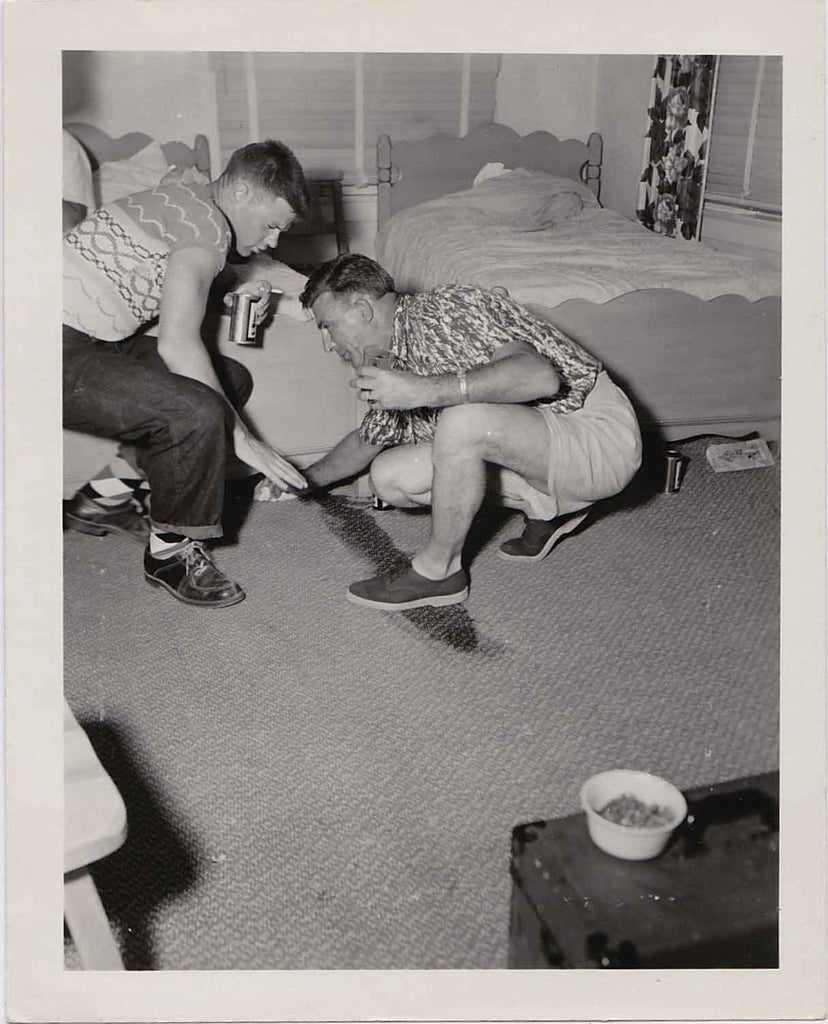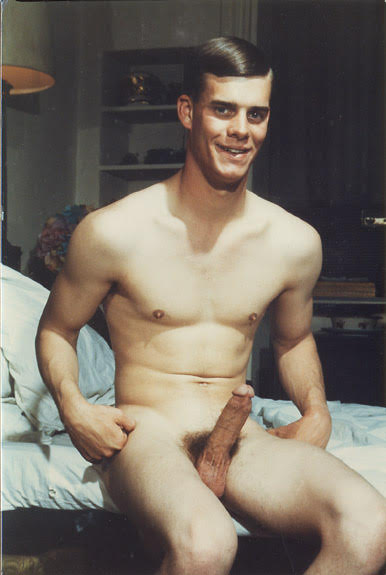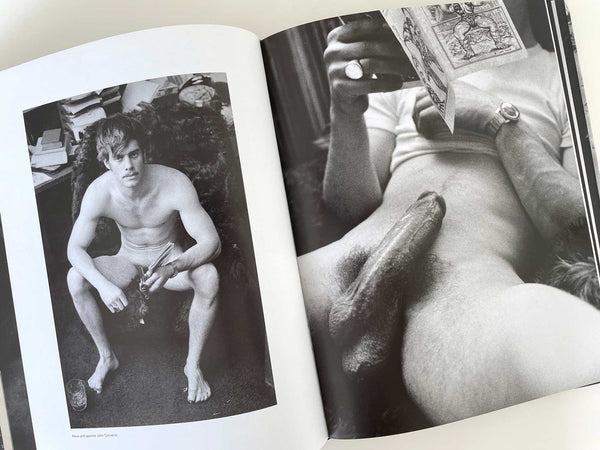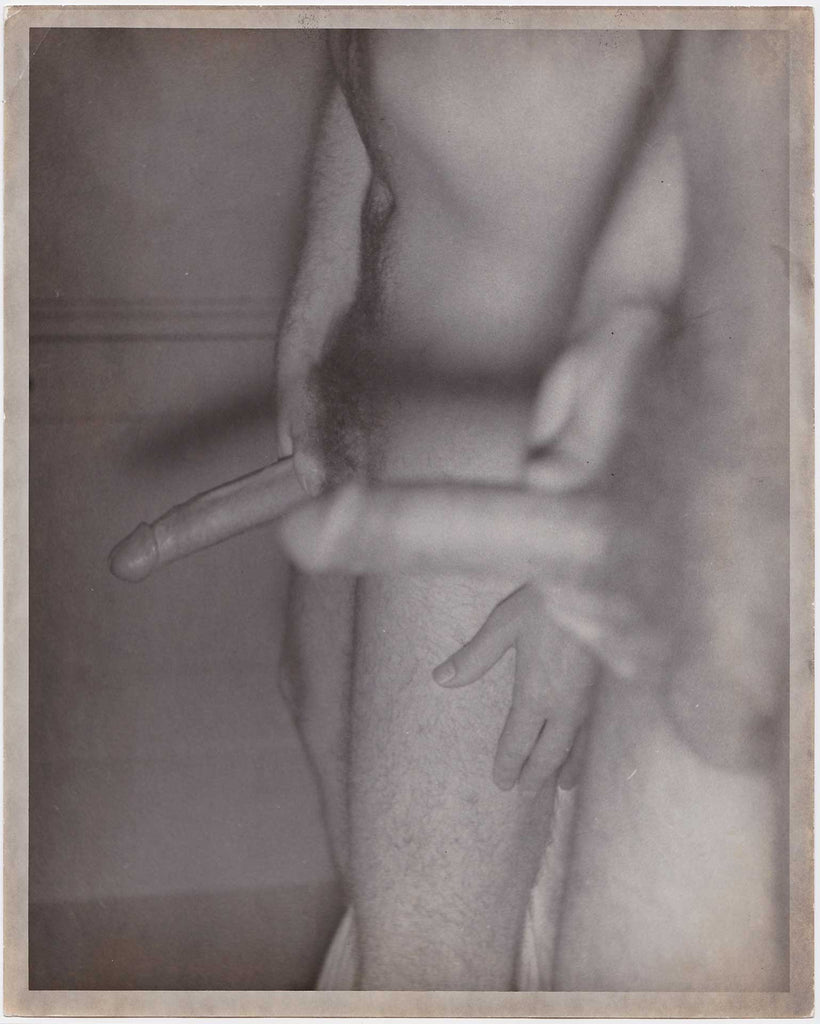At first glance this photo seems banal. Two guys in a dirty, ugly bedroom deal with yet another spill on the carpet. But take another look.
In the center a handsome, well-dressed older man crouches down on one knee. A glass in one hand, Daddy reaches under the bed to sop up the spill with the other. But Daddy isn’t looking at what he’s doing. He’s gazing into his young buddy’s crotch.
How old is this kid? 21? Younger? He’s worthy of attention. He wears a (very) short-sleeve jersey (with chains running across) that shows-off his arms. Cuffed jeans reveal cool diamond patterned socks.
He gestures down toward the spill as if he’s going to clean it up with the power of the Lord. He holds a beer and a cigarette (rather close to Daddy’s hair). There are two beer cans and a magazine on the floor. The title isn’t legible but the cover looks like a physique mag.
There’s one more little surprise. Seated on the bed behind Young Guy is another man. He is merely a sliver of shoulder and an elbow. But he’s there, as is the photographer who chose to document this particular moment for posterity.
Can anyone say: “Partay?”
















